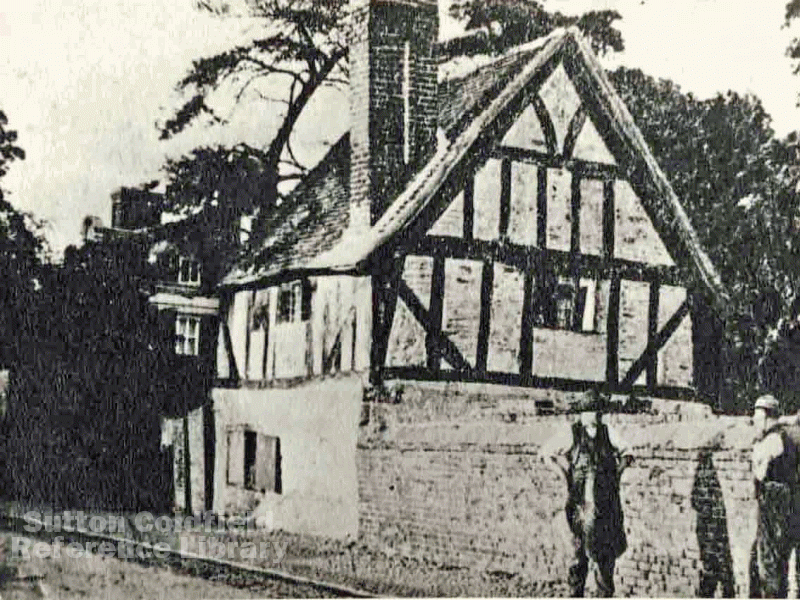An unpublished manuscript known as the Holbeche Diary was in circulation in Sutton in the 1890s. Written in 1892 by Richard Holbeche, it is not a diary at all, but his recollections of the Sutton Coldfield of his youth in the 1850s, “before Sutton Coldfield lost its character of being a sleepy old-fashioned town” and before “the freshness of country life disappeared and the ideas and manners of a large provincial town were substituted”.
Holbeche’s method was to describe each house in High Street and the people who lived there as he remembered them, including Mr. Cull’s house which was the school he had attended. After Mr. Culls house came the house where his five maiden aunts lived, which stood in the way of the Midland Railway and was demolished in the 1870s; also demolished was the old malt house, where the maltster was Wells, “father of the well-known jockey” (John Wells, 1833-73, rode the Derby winner in 1858, 1859 and 1868.)
Next came a “pretty block” of three houses, and after a few yards, a cottage nick-named “Cock Sparrow Hall”. Photographs of this building do not accord with Holbeche’s description of its thatched roof and dormer window, but he certainly recalled its picturesque appearance. “It was time-honoured. The walls were of black and white half-timber; on the ground floor the window was a lattice with another peeping through the thick thatch on the dormer principle”. The cottage stood right against the road, with the entrance round the back, and Holbeche remembered the shutters on the front window which stuck out across the pavement when they were open, “inconvenient certainly as the inhabitants had to come from the back of the house to open or shut it, and if it were not shut gently it broke all the glass in the window”.
“The Westons lived there, but not I think as early as the fifties” wrote Holbeche, but the census records show William Weston and his wife Maria in residence in 1841, 51, 61, and 71, where he gives his occupation as farm worker and gardener. The cottage was seventeen feet square with a nine-foot “lean-to” along one wall, and was rented from the owner of Moat House, Mr. W. Steele Perkins.
Perkins was succeeded at Moat House by Edward Arthurs, and Richard Sadler the solicitor was the owner in 1881, and Holbeche was thinking of either Arthurs or Sadler when he wrote “may the possessor of the property be forgiven for demolishing it, for it was wanton, a pure piece of vandalism”. The Westons were still there in 1871, though the house is not marked on the 1871 railway survey, so it was probably Sadler who was responsible for its demolition - he was something of a property developer.
